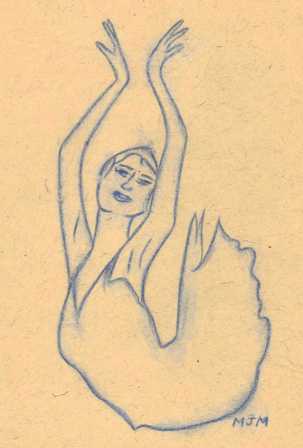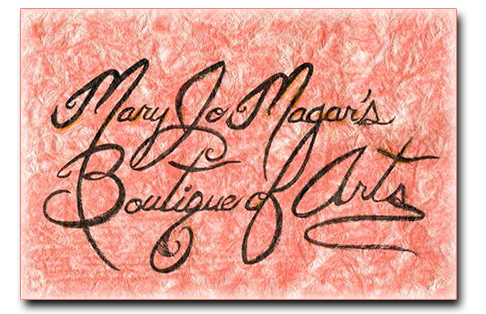
“Odette on Silk Tights”
I painted Odette in dyer’s woad on the upper right leg of a pair of silk tights given to me as a keepsake by my Russian-Czech ballet teacher who wore these tights during her prime years as an international dancer in the late 1930’s and 40’s. She died in 2008 at the age of 102. Having cherished these tights for years, I decided to use them in some way for display rather than just keeping them to myself. They date to the early 1940’s and are made of a Siberian silk unmatched by other kinds of silk, even heirloom silks and the pristine “peace” silks of today’s eco-textile industry. The flesh tone is the natural color of the silk. I used no resist in painting, as the texture of the silk readily and precisely absorbed the woad dye, which happens to evoke the hue of stage lighting used in Swan Lake. Other than a few pulls, the silk of the tights remains in remarkably good condition, even at the feet, considering that the years during which these tights were in action were marked by deprivation of the times, i.e., my teacher did not have many changes of tights. I can honestly say, “They don’t make ’em like that anymore” – my teacher or the tights.
Before the invention of nylon and other synthetics, ballet tights (and shoes before leather was used) were made of silk, which is not only a natural fiber but a living fiber. Pure silk possesses tremendous electrostaticity, which has a warming, vitalizing effect on skin and muscles – ideal for a ballerina. My personal belief is that the silk tights of yesteryear energized the dance and protected legs and feet from injury in a way that no other fabric could then or does now.
The renowned English ballerina Margot Fonteyn, who received her significant training from Russian dancers, nearly ended her career at its peak simply because she could no longer obtain silk tights once nylon became popular.
To know more about silk’s therapeutic properties, visit my menu page titled Sal-Sol-Silk.
